Think Of Others. Think Of The Vulnerable.

Think of others. Think of the vulnerable.
More Posts from We-are-all-paranoid and Others

Mitochondria are primarily known as the powerhouse of the cell. However, these cellular organelles are required not only for providing energy: Professor Konstanze Winklhofer and her group at the Faculty of Medicine at Ruhr University Bochum, Germany, recently discovered that mitochondria play an important role in signal transduction in innate immune pathways.
They regulate a signaling pathway that helps to eliminate pathogens, but can cause damage through inflammation upon overactivation. The research team published their findings in the EMBO Journal.
Continue Reading.
Reblog and write the opposite of your URL
thatwasnotveryravenofyou → itisextremelypigeonofthem
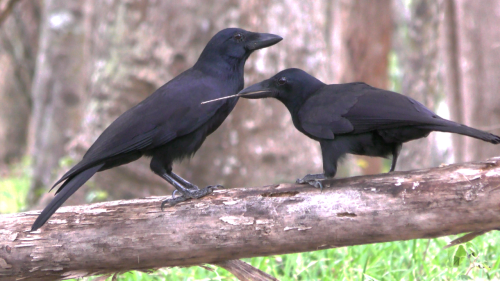
Like humans, these big-brained birds may owe their smarts to long childhoods
Human beings typically don’t leave the nest until well into our teenage years—a relatively rare strategy among animals. But corvids—a group of birds that includes jays, ravens, and crows—also spend a lot of time under their parents’ wings. Now, in a parallel to humans, researchers have found that ongoing tutelage by patient parents may explain how corvids have managed to achieve their smarts.
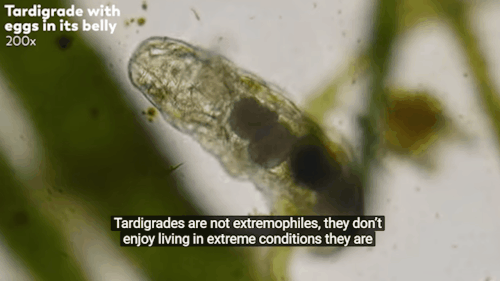
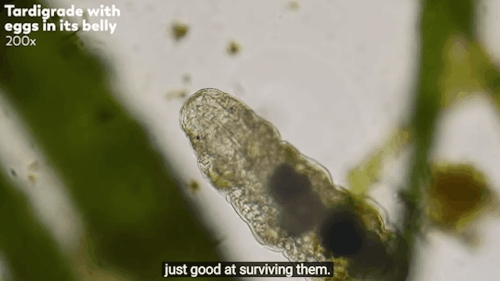
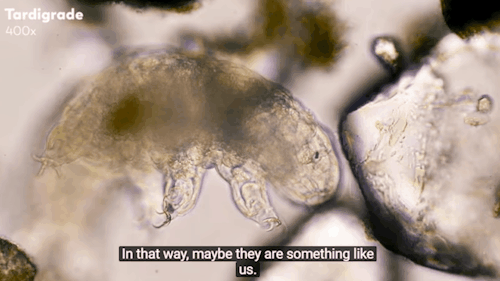
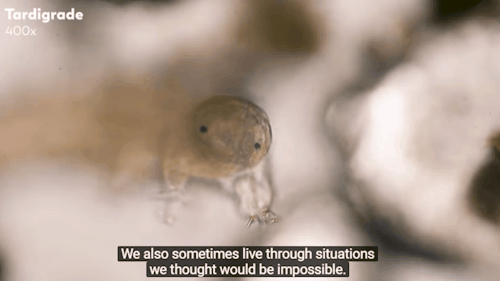
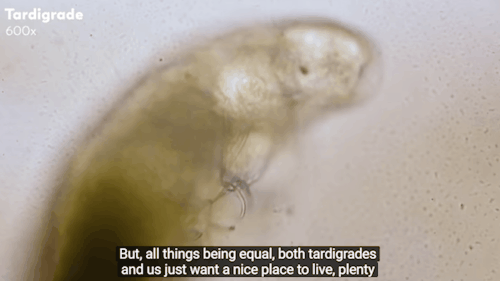
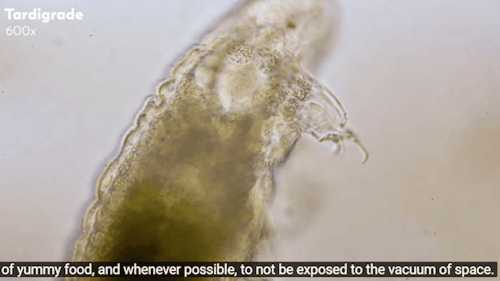
Journey to the Microcosmos: Tardigrades: Chubby, Misunderstood, & Not Immortal
Images originally captured by Jam’s Germs
Thank you @airyearthgirl for inspiring me to gif these amazing lines

Therocephalians were a group of synapsids very closely related to – or possibly even ancestral to – the lineage leading to modern mammals. They were a diverse and successful group of carnivores during the latter half of the Permian, but suffered massively during the "Great Dying" mass extinction, with only a handful of representatives making it a few million years into the Triassic.
Tetracynodon darti was one of these rare Triassic therocephalian survivors, living in what is now South Africa around 251 million years ago. Only about 25cm long (~10"), it had slender limbs and strong claws that suggest it was a scratch-digger. Its long snout was lined with pointed teeth, and it was probably an active predator hunting by snapping its jaws at fast-moving prey like insects and smaller vertebrates.
Its combination of small size, burrow-digging habits, and unspecialized diet may be the reason it scraped through the Great Dying when most of its relatives didn't – but unfortunately it seems to have been a "dead clade walking", disappearing only a short way into early Triassic deposits.
———
NixIllustration.com | Tumblr | Patreon
References:
Fontanarrosa, Gabriela, et al. "The manus of Tetracynodon (Therapsida: Therocephalia) provides evidence for survival strategies following the Permo-Triassic extinction." Journal of Vertebrate Paleontology 38.4 (2018): 1-13. https://doi.org/10.1080/02724634.2018.1491404
Sigurdsen, Trond, et al. "Reassessment of the morphology and paleobiology of the therocephalian Tetracynodon darti (Therapsida), and the phylogenetic relationships of Baurioidea." Journal of Vertebrate Paleontology 32.5 (2012): 1113-1134. https://www.researchgate.net/publication/254315180_Reassessment_of_the_Morphology_and_Paleobiology_of_the_Therocephalian_Tetracynodon_Darti_Therapsida_And_The_Phylogenetic_Relationships_of_Baurioidea
Wikipedia contributors. “Tetracynodon” Wikipedia, 21 Aug. 2024, https://en.wikipedia.org/wiki/Tetracynodon
Wikipedia contributors. “Therocephalia” Wikipedia, 01 Oct. 2024, https://en.wikipedia.org/wiki/Therocephalia
Not to self diagnose but something is wrong
*sticks my hand in your nucleus and swirls your dna around*

Stop the ban on blood donation of gay men
Women in STEM are just witches in white lab coats instead of black robes


art source: abigaillarson-Poisonous Plants irenhorrors-Drawlloween Laboratory
-
 hisforeverandever reblogged this · 2 years ago
hisforeverandever reblogged this · 2 years ago -
 alloftimeandspaceisours reblogged this · 2 years ago
alloftimeandspaceisours reblogged this · 2 years ago -
 alloftimeandspaceisours liked this · 2 years ago
alloftimeandspaceisours liked this · 2 years ago -
 ohheypeyt reblogged this · 2 years ago
ohheypeyt reblogged this · 2 years ago -
 justaholeinmysoul reblogged this · 3 years ago
justaholeinmysoul reblogged this · 3 years ago -
 romaineshelter liked this · 3 years ago
romaineshelter liked this · 3 years ago -
 colonelalloy liked this · 3 years ago
colonelalloy liked this · 3 years ago -
 miyonorii1317 liked this · 3 years ago
miyonorii1317 liked this · 3 years ago -
 phycotic-hatter reblogged this · 3 years ago
phycotic-hatter reblogged this · 3 years ago -
 phycotic-hatter liked this · 3 years ago
phycotic-hatter liked this · 3 years ago -
 cokescora reblogged this · 3 years ago
cokescora reblogged this · 3 years ago -
 cheeseburger-and-vine reblogged this · 3 years ago
cheeseburger-and-vine reblogged this · 3 years ago -
 foxfieldbear reblogged this · 3 years ago
foxfieldbear reblogged this · 3 years ago -
 buttpranks liked this · 3 years ago
buttpranks liked this · 3 years ago -
 politicgo reblogged this · 3 years ago
politicgo reblogged this · 3 years ago -
 erokav reblogged this · 3 years ago
erokav reblogged this · 3 years ago -
 blizzardofjj liked this · 3 years ago
blizzardofjj liked this · 3 years ago -
 eastcoastguy62 reblogged this · 3 years ago
eastcoastguy62 reblogged this · 3 years ago -
 justsayin59 reblogged this · 3 years ago
justsayin59 reblogged this · 3 years ago -
 pignusthings liked this · 3 years ago
pignusthings liked this · 3 years ago -
 mollybyrd reblogged this · 3 years ago
mollybyrd reblogged this · 3 years ago -
 wandernomore reblogged this · 3 years ago
wandernomore reblogged this · 3 years ago -
 wandernomore liked this · 3 years ago
wandernomore liked this · 3 years ago -
 cheeseburger-and-vine liked this · 3 years ago
cheeseburger-and-vine liked this · 3 years ago -
 scientifichydralisk reblogged this · 3 years ago
scientifichydralisk reblogged this · 3 years ago -
 scientifichydralisk liked this · 3 years ago
scientifichydralisk liked this · 3 years ago -
 dead---planet reblogged this · 3 years ago
dead---planet reblogged this · 3 years ago -
 dead---planet liked this · 3 years ago
dead---planet liked this · 3 years ago -
 acivilzedhuman reblogged this · 3 years ago
acivilzedhuman reblogged this · 3 years ago -
 rebel-heart-gypsysoul liked this · 3 years ago
rebel-heart-gypsysoul liked this · 3 years ago -
 visitingyoutoday reblogged this · 3 years ago
visitingyoutoday reblogged this · 3 years ago -
 pulp-art-from-an-english-writer liked this · 3 years ago
pulp-art-from-an-english-writer liked this · 3 years ago -
 ryansviewings reblogged this · 3 years ago
ryansviewings reblogged this · 3 years ago -
 ryansviewings liked this · 3 years ago
ryansviewings liked this · 3 years ago -
 neverknwsbest liked this · 3 years ago
neverknwsbest liked this · 3 years ago -
 justnursingmycoffee reblogged this · 3 years ago
justnursingmycoffee reblogged this · 3 years ago -
 reynard61 liked this · 3 years ago
reynard61 liked this · 3 years ago -
 alexistheheathen reblogged this · 3 years ago
alexistheheathen reblogged this · 3 years ago -
 useyourblinker reblogged this · 3 years ago
useyourblinker reblogged this · 3 years ago -
 ahabnmoby reblogged this · 3 years ago
ahabnmoby reblogged this · 3 years ago -
 ahabnmoby liked this · 3 years ago
ahabnmoby liked this · 3 years ago -
 russalex reblogged this · 3 years ago
russalex reblogged this · 3 years ago -
 illiteratepoet51 liked this · 3 years ago
illiteratepoet51 liked this · 3 years ago -
 pizza-hats-of-the-world-1882 reblogged this · 3 years ago
pizza-hats-of-the-world-1882 reblogged this · 3 years ago
